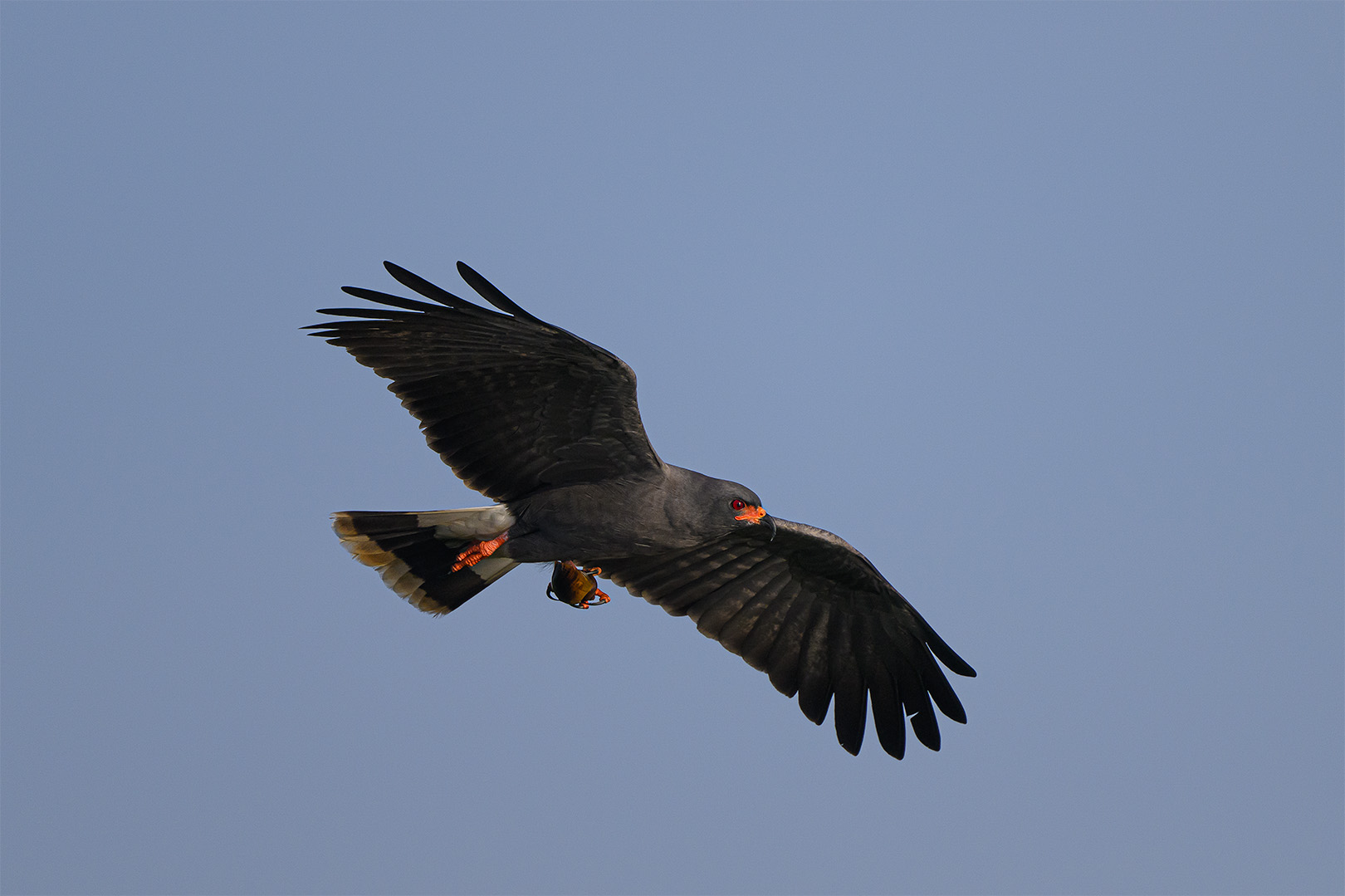
A banded female Snail Kite hovers in anticipation over the marshy waters of Lake Kissimmee as it searches for an Apple Snail, her primary food source. On our second day on Lake Kissimmee, we had another very cooperative Snail Kite. She has an unknown something stuck on her left talon but that didn’t seem to keep her from hunting and successfully finding snails. In this shot, she was actually dropping down to retrieve the snail she saw from above, dangling her legs as she prepared to extend her talons. Sadly for me, the shot of the exact moment the bird plucked the snail from the water eluded me. Hopefully, I’ll return someday and be successful in getting that shot.


















